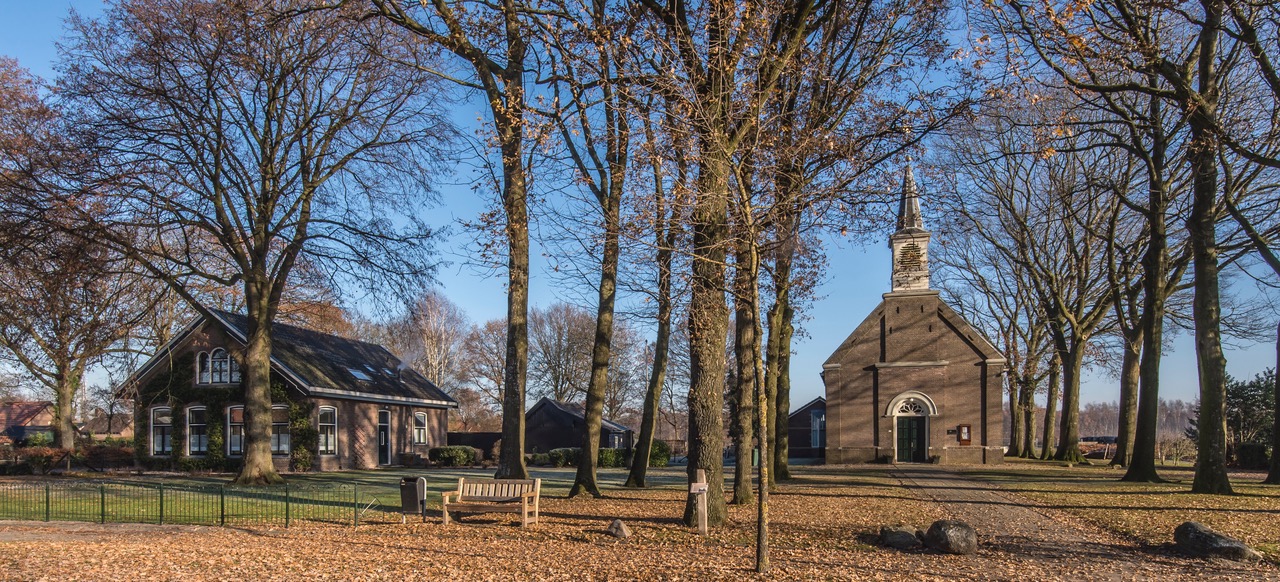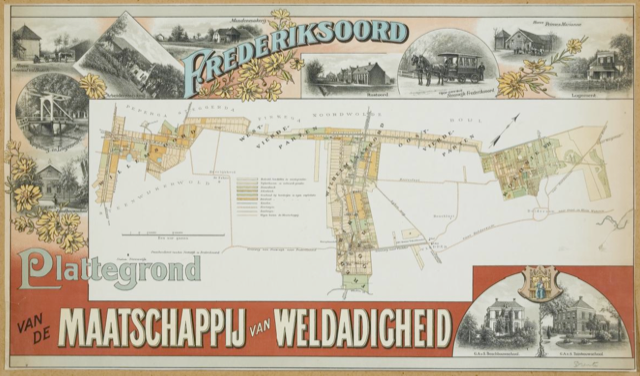|
|
Willemsoord, Netherlands, Europe |
|
|
|
|
|
|

Willemsoord
source: https://www.rtvoost.nl/ni
euws/290492/Koninklijk-be
zoek-bij-viering-200-jaar
-Maatschappij-van-Weldadi
gheid

Church and rectory in
Willemsoord
source: https://www.kolonienvanwe
ldadigheid.eu/de/system/f
iles/CofB4%20III%20Willem
soord%20Church%20and%20Re
ctory.jpeg
|

In 1818, three years after the Napoleontic wars, the Netherlands was impoverished as never before: one third of the population lived off charity. The cities and the countryside dealt with poverty, crime, vagrants and beggars. To ease the poverty, a system of free and unfree colonies was initiated by the elite.
Cheap, undeveloped land (marshes or heathland) was bought outside of the Randstad where the main cities are, in poor provinces like Drenthe, Overijssel, Friesland and the Kempen. General Johannes van den Bosch, with a mandate from king Willem I, started the Maatschappij van Weldadigheid (Society of Benevolence) and built the first colony Frederiksoord in 1818. After this first one, more were to follow: Veenhuizen, Ommerschans, Willemsoord, Wilhelminaoord and Boschoord. In what is nowadays Belgium, two more colonies were built: Wortel and Merksplas.
The idea and goal of the colonies was to eradicate poverty by giving the urban proletariat from the cities a chance to improve their lives by working in the colonies: they developed the land, made it suitable for agriculture and could earn a decent living. Meanwhile the cities freed themselves of criminals and paupers.
There was a difference between free colonies (like Fredriksoord, Willemsoord) where the colonists were selected before being admitted to the colony and unfree colonies (like Veenhuizen or Ommerschans) where beggars, criminals, vagrants and unwanted people were forced to move to and forced to work and subject to a repressive regime.
In 1820, construction of Willemsoord started with roads and the first 100 small colonists' houses. Other buildings included housing for staff members, a school and a house for the teacher, and spinning hall.
The design of the colony was rational and in straight lines, and the houses were placed at regular intervals of 100 metres.
source: |
|
2008 - 2024 disclaimer
|

